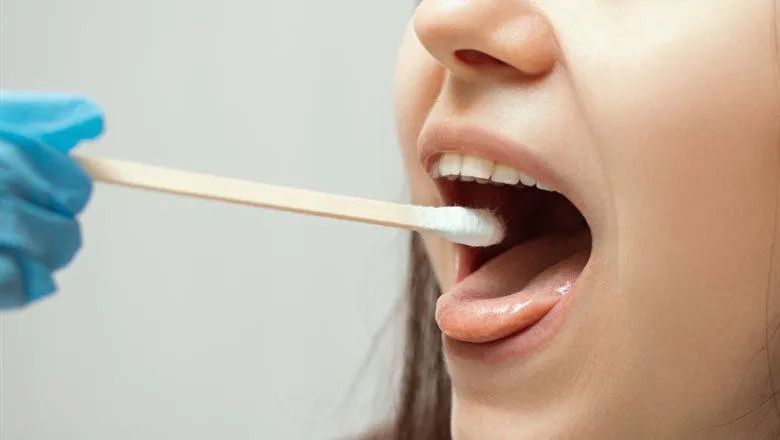It is crucial to remember that it is people that are at the centre of any TTI and we need their engagement with the system for it to be effective. There is a need for clear messaging around symptoms and for consideration around the burden of self-isolating if a test is positive.
Lead author Dr James Rubin, from the NIHR Health Protection Research Unit in Emergency Preparedness and Response at King’s College London
11 September 2020
Test, trace and isolate systems must consider human behaviour
Greater public awareness of symptoms, rapid testing, guarantees on confidentiality and measures to lessen the financial burden of quarantine are central to making a test, trace and isolate system effective, according to a new comment article led by King’s College London researchers.

The strategy of isolating sick patients, tracing their contacts and placing them into quarantine is a well-known approach to prevent the spread of infectious diseases. During the current COVID-19 pandemic many countries have used such a system with varied results and mixed public reception. On the 1 June UK Government put in place a test, trace and isolate system with the aim of preventing a resurgence of COVID-19 as lockdown measures were eased.
Published in the Journal of the Royal Society of Medicine and based on research in this area, the article was written to highlight the need to consider psychological and behavioural influences on the uptake of any test, track and isolate (TTI) systems. The researchers put forward five areas where behavioural issues around the reporting of symptoms and quarantine could reduce the effectiveness of a TTI system and suggest possible approaches to counteract these.
The article was a collaboration between researchers from the NIHR Health Protection Research Unit in Emergency Preparedness and Response (HPRU EPR), University of Exeter and University of Bristol.
Identifying symptoms
Identification of symptoms is the trigger which starts the process of any TTI system. The article highlights that the main symptoms of COVID-19 are not specific to the virus which means many of those who identify these symptoms will not actually have COVID-19. This is demonstrated by recent research that showed 6.5% of the population report cough or a fever, although prevalence of COVID-19 in England over the same time period was estimated to be about 0.25%. Screening such a high volume of people will be an enormous workload, according to the researchers, and it may be necessary to define the symptoms with more detail to prevent over-reporting, for example by specifying a dry cough.
Reporting symptoms
Relying on patients to report symptoms is integral to a TTI system but there are several barriers to reporting that need consideration according to the analysis article. Media coverage of unusual symptoms such as COVID toe and delirium may confuse the public understanding of central symptoms, whilst many may be reluctant to report mild symptoms if these aren’t seen as important. Research shows that public concern about COVID-19 is declining which means people may be less motivated to report symptoms. As such the analysis suggests there may be a need for better education around symptoms and campaigns to persuade people to report even mild symptoms.
He added, ‘Self-isolating is always going to be inconvenient for people, there is no getting away from that. But we should work on reducing those downsides and making sure people realise just how important and valued their contribution is in tackling the coronavirus pandemic.’
Burden caused by reporting symptoms
A large barrier to engagement with a TTI system is the perceived burden caused by reporting symptoms. Isolation during disease outbreaks has been shown by previous research to be associated with mental health problems and can also lead to financial and social costs. According to the analysis a reduction in these costs will be central to the uptake of the system and this could be enabled by rapid testing so those who do test negative are minimally impacted. Connecting those who test positive with community support networks to help improve adherence to necessary isolation and quarantine is an important factor to reduce this burden.
Identifying contacts to trace
Contact tracing relies on those who test positive being able and willing to identify their contacts. The researchers suggest that people may be concerned about causing disruption to those they have been in contact with, particularly if this can be linked back to them. A firm guarantee of confidentiality is essential for people to trust the system, according to the analysis, and providing people with an option to notify contacts themselves may decrease the perception of intrusiveness.
Quarantining contacts
There are a number of channels that can be used to alert contacts but the source of the alert must be trustworthy to increase confidence and acceptability. This can be achieved by personalising the source of the message such as marking it from a health visitor or public health clinician. Altruism and social duty are key motivators for contacts to quarantine and messaging should be framed as ‘the right thing to do’. Due to the large volume of COVID-19 like symptoms in the community some people may be asked to quarantine multiple times. In order to get a balance in this area, researchers suggest a system that provides people with an immediate warning that they may be at risk or an amber alert so they can take recommended precautions until they are able to be tested. Such alerts are easy to incorporate into an app-based system and can be developed in other systems via an opt-in database.
Reference: Rubin, G.J. (2020) Improving adherence to ‘Test, Track and Isolate’ Journal of Royal Society of Medicine DOI: 10.1177/0141076820956824
Contact
For interviews or any further media information, please contact:
Franca Davenport, Interim Senior Press Officer, IoPPN: franca.davenport@kcl.ac.uk +44 7718 697176

